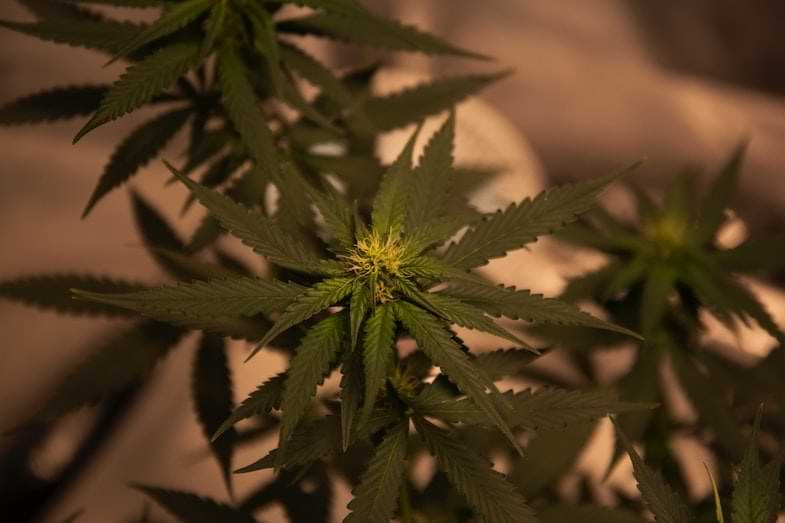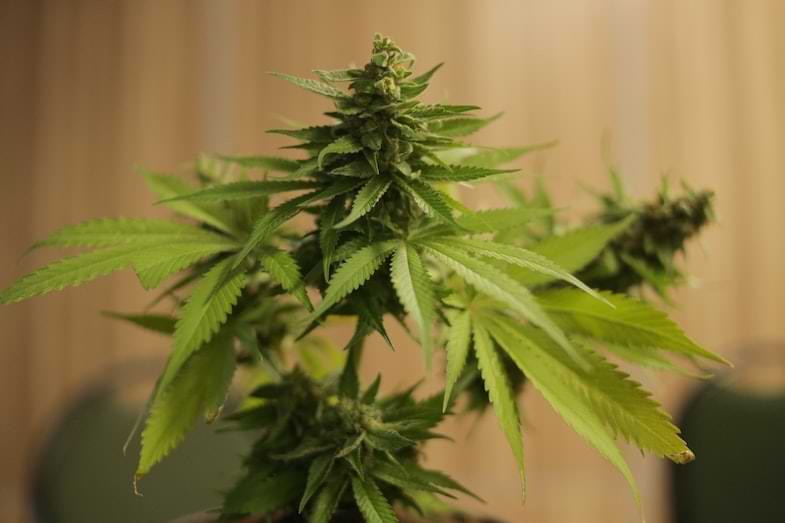Published on: 27/01/2023
The role of terpenes in the alteration of taste and aroma of cannabis
If you have decided to open this article, it means that you too are curious about terpenes and their interaction with the taste and aroma of cannabis.
With the aim of satisfying this thirst for knowledge, in the next article we will talk about the terpene profile of cannabis.
Enjoy the reading!


First of all: what are cannabis terpenes?
Terpenes are one of the most important compounds used in essential oils, and are most commonly derived from plants, including teas, herbs and, of course, cannabis.
Created in unique combinations, they give plants their scent, taste and look, but are also a way to protect themselves from predators or to attract insects for pollination.
As we said earlier, they are present in the spices, teas and essential oils we use every day. Two such spices are curcumin and thyme. Curcumin is a popular spice in Indian dishes, boasting a wide range of healing qualities, but is best known as an anti-inflammatory and pain reliever. Thyme is another spice commonly used in our cuisine which, from a therapeutic point of view, has antibacterial and antifungal properties.
The teas we drink for their healing qualities are green tea, rooibos and turmeric. In fact, their terpenes are known for their anti-inflammatory, analgesic and calming characteristics.
But let’s get back to us.
A wide variety of terpenes are also found in marijuana and are similar to the better-known compounds of THC and CBD. Like these major chemicals, terpenes in marijuana have several therapeutic attributes that include analgesic, anti-anxiety, and anti-inflammatory properties.
So, let’s investigate it further.
Read also: Taxation of legal cannabis: here’s what could happen soon
Cannabis terpenes: these are the most common and how they affect taste and aroma
In cannabis strains there are primary and secondary terpenes:
- the primary terpenes are those that most influence the appearance, flavour and aroma of the plant;
- secondary terpenes are the underlying substances that add depth and layering to all these plant characteristics.
Also, you probably already know that marijuana strains are divided into two categories, Indica or Sativa.
Well, these two groupings are based on the type of hybrid characteristics of the plant, including taste and aroma, and the effects a strain has on the user. Typically, Indica strains give the user full body relaxation.
Sativa strains are known for their energizing and creative effects. The taste, smell, texture and effects of a strain go far beyond the division between Indica and Sativa. The variety of marijuana terpenes present in a particular strain and whether those terpenes are primary or secondary is the reason why a strain is Indica or Sativa.
Here are some of the most important terpenes found in cannabis:
- Myrcene: Myrcene is one of the most abundant terpenes found in cannabis, but also in lemongrass, bay leaf, parsley, cardamom, thyme and basil. Animal studies suggest it has sedative properties, but the evidence is weak and effects have only been seen at high doses;
- Caryophyllene: Caryophyllene is responsible for the spicy scent of black pepper. It is also found in cloves, hops and rosemary. A 2014 animal study found that it has anti-inflammatory and pain-relieving properties in mice, but whether these findings apply to humans is unclear.
- Humulene: Humulene is found in cannabis, sage and ginseng. Animal studies have found anti-inflammatory properties in mice and rats.
alpha-pinene: Pinene is the most abundant terpene in nature and is found in cannabis, pine trees and Spanish sage. It has anxiolytic properties and is able to bind to neurotransmitter sites in the brain in the same way as drugs such as Xanax. - Linalool: Linalool, the main terpene in lavender, is responsible for the plant’s floral scent. Animal and human studies suggest that linalool has anxiolytic, antidepressant, mood stabilizing, sedative, pain relieving, and anti-inflammatory properties.
- Limonene: Limonene is often found in cannabis, lemon peel, and other citrus fruits. Preclinical studies show that it has anticancer, anti-inflammatory, wound healing and antibacterial effects.


So how do terpenes affect the body? The importance of the entourage effect
While terpenes alone aren’t capable of getting high, researchers believe they can slightly alter the sensations and therapeutic benefits one gets from smoking cannabis.
Much of the medicinal properties of cannabis are two to cannabinoids such as CBD and THC, while terpenes have a more subtle, indirect effect on the overall experience of inhaling cannabis. In fact, they are largely responsible for the slight differences in effect between cannabis strains that have the same cannabinoid composition.
In other words, different terpenes affect the body differently. Some have a more energetic or uplifting effect, while others are more relaxing or sedative.
Terpenes are also thought to have their own additive therapeutic effect, and more research is ongoing to better understand their potential benefit and use for various symptoms and disease states.
However, some evidence suggests that terpenes don’t change how CBD and THC affect the brain.
As we have seen, research on the potential of terpenes is still limited, to some extent, even though the available research suggests very promising effects. Many studies show that CBD alone tends to be less effective than CBD in combination with small amounts of THC and other cannabinoids, and the terpenes found in cannabinoids.
Therefore, it seems that it is the combined effect of the different cannabinoids and terpenes that is more effective.
This entourage effect, as it is generally known, refers to terpenes that react synergistically with cannabinoid compounds such as THC in the endocannabinoid system (neurotransmitters and cannabinoid receptors found in the nervous system of most mammals) to affect the body and mind.
So, if a terpene has physical effects, the effect will depend on the specific terpene. Terpenes with similar flavours can have similar effects. In general, terpenes can provide physical effects that include:
- anti-inflammatory properties;
- pain relief;
- antibacterial properties;
- antifungal properties;
- reduction of muscle spasms.
Not to mention that other terpenes may be able to reduce the mental impact of disorders such as depression, anxiety, insomnia and stress.
Read also: Hemp in the artistic field: a combination with ancient roots
Conclusion
In this article we talked about the role of terpenes in altering the taste and aroma of cannabis. So, if you are looking for quality products, visit sensoryseeds.com, the leading e-commerce in the legal marijuana seed sector.
See you soon!









